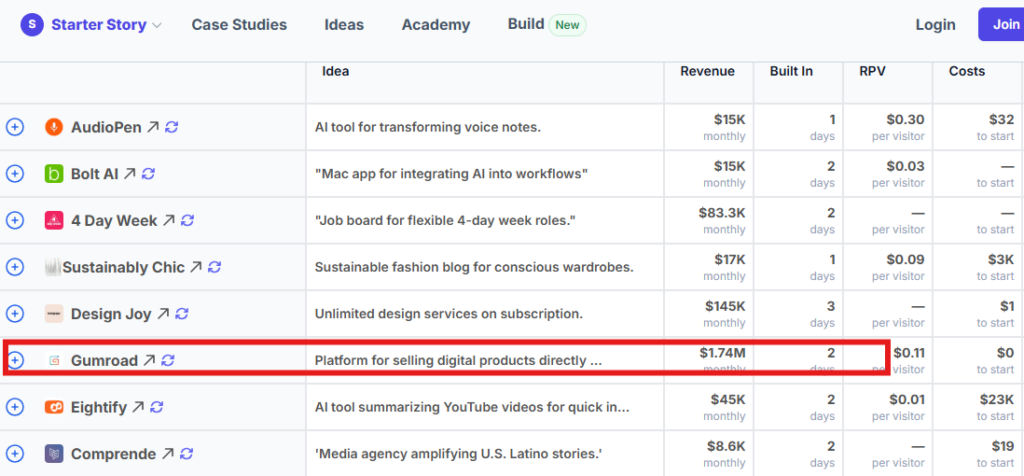Alice was getting very tired of sitting by her sister on the bank of YouTube, having nothing to do except watch another dropshipping millionaire explain how they made seven figures selling fidget spinners from Alibaba while somehow finding the time to create a 47-minute tutorial about it. The rabbit hole of internet entrepreneurship had grown curious indeed, but nothing prepared her for what happened next: the very same gurus who had been preaching the gospel of product-less e-commerce suddenly announced they had learned to vibe code over the weekend and built million-dollar AI apps before their morning coffee had cooled.
“Curiouser and curiouser,” Alice thought, as she tumbled down into the wonderland of Vibe Coding, where the laws of software development seemed to follow the same logic as the Queen of Hearts’ croquet game—that is to say, no logic at all.
The Great Migration of the Hustle Prophets
In the peculiar ecosystem of internet entrepreneurship, there exists a phenomenon as predictable as the Cheshire Cat’s grin: the wholesale migration of “success gurus” from one trending opportunity to another. Yesterday’s dropshipping magnates have undergone a remarkable metamorphosis, emerging as today’s “vibe coding” evangelists with the same enthusiasm they once reserved for explaining profit margins on novelty phone cases.
These modern-day Mad Hatters host digital tea parties where the central riddle remains unchanged: “How can someone who claims to be making millions from their revolutionary business model find the time to create comprehensive video courses explaining exactly how they do it?” The answer, like most things in Wonderland, makes perfect sense until you think about it for more than six seconds.
Marcus “Seven-Figure-Sammy” Rodriguez, who eighteen months ago was demonstrating his dropshipping empire from what appeared to be his mother’s basement, recently posted a screenshot showing his latest creation: an AI-powered meditation app built “in literally four hours during my morning routine.” The app, according to his tweet, has already generated $180,000 in monthly recurring revenue, which raises the natural question of why he’s spending his Tuesday afternoon explaining his process to 47,000 Twitter followers instead of enjoying his yacht.
The Shopify Stepping Stone Paradox
The rise of dropshipping as the internet’s favorite get-rich-quick scheme was intrinsically linked to platforms like Shopify, which promised to democratize e-commerce by eliminating the pesky requirements of inventory, customer service, or product knowledge. The formula was elegantly simple: find products on Alibaba, mark them up 300%, create Facebook ads featuring attractive people using the products in impossible ways, and wait for the money to pour in like digital rain.
What made dropshipping particularly attractive to the guru class was its accessibility to explanation. Anyone could understand buying low and selling high—it was capitalism’s most basic magic trick. The complexity lay not in the concept but in the execution, which conveniently allowed for endless content creation opportunities. YouTube channels bloomed like flowers in the Queen’s garden, each one promising to reveal the “one secret” that would unlock passive income paradise.
But like all Wonderland adventures, the dropshipping dream contained its own seeds of destruction. As the market became saturated with people selling identical products with identical marketing strategies, profit margins began to disappear like the Cheshire Cat’s body, leaving only the grin of empty promises behind.
The Vibe Coding Revolution

Enter the new wonderland: Vibe Coding, where the promise is even more seductive than dropshipping because it eliminates the one remaining friction point—other people. No suppliers from Shenzhen, no customers complaining about delivery times, no Facebook ad account suspensions. Just you, your laptop, and the mystical ability to conjure profitable applications from the ether using nothing more than “good vibes” and what appears to be a supernatural understanding of market demand.
The vibe coding narrative follows a familiar pattern: wake up with an idea, spend a few hours assembling code (often with the help of AI tools that do most of the actual programming), launch immediately, and watch the revenue roll in. The time scales have compressed to the point of absurdity—where dropshipping gurus once claimed to build businesses in 30 days, vibe coders insist they can create sustainable software companies in 30 hours.

A recent case study making rounds on entrepreneur Twitter features the story of Gumroad, allegedly built in just two days and now generating $1.74 million monthly. The narrative is compelling in its simplicity: a few days of focused work equals generational wealth! It’s the digital equivalent of finding a golden ticket in your chocolate bar, except the chocolate bar is your GitHub repository and the golden ticket is venture capital funding.
The Screenshot Economy
Central to both the dropshipping and vibe coding mythologies is the screenshot—the digital equivalent of ancient cave paintings, but instead of depicting woolly mammoths, they show Stripe dashboards and bank account balances. These screenshots serve as the primary evidence for claims that would otherwise seem too fantastical for even the most gullible audience.
The screenshot economy operates on a simple principle: numbers on screens are more persuasive than actual business fundamentals. A screenshot showing $47,000 in monthly recurring revenue carries more weight than questions about customer acquisition cost, churn rates, or the sustainability of whatever growth hacks generated those numbers. It’s the visual equivalent of the Red Queen’s rule: “Sentence first—verdict afterward.”
What makes these screenshots particularly effective is their apparent authenticity. Unlike the obviously staged lifestyle content that dominated early influencer culture, revenue screenshots feel like glimpses behind the curtain. They’re intimate, technical, and therefore trustworthy. The fact that they can be easily manipulated using browser developer tools or simple photo editing is conveniently overlooked by audiences hungry for proof that the digital dream is achievable.
The Temporal Paradox of Success
Perhaps the most Alice-in-Wonderland aspect of the vibe coding phenomenon is the temporal paradox it creates. If building million-dollar applications is truly as simple as these gurus suggest, why do they spend so much time documenting and teaching the process? The logical answer—that teaching about success is more profitable than the actual success being taught—is too cynical for most audiences to accept.
Instead, we’re presented with a reality where the most successful entrepreneurs are simultaneously the most generous with their time, constantly available to share their secrets with strangers on the internet. They’ve achieved that magical state where they’ve solved the fundamental problem of capitalism—scarcity—by discovering infinite resources of both time and money.
This paradox extends to the broader vibe coding community, where the most celebrated success stories involve applications that were built “over the weekend” but continue to require full-time maintenance, customer support, and feature development. The initial two-day build becomes a never-ending story of iterations and improvements, each documented across multiple social media platforms for educational purposes, of course.
The AI-Powered Mad Hatter
The emergence of AI coding tools has added a new layer to the vibe coding narrative. Where traditional programming required years of study and practice, AI assistants promise to eliminate the skill gap entirely. Coding becomes a conversation rather than a craft, accessible to anyone who can articulate their vision in natural language.
This democratization of programming capability has created a new breed of entrepreneur: the AI whisperer. These individuals claim to have mastered the art of prompt engineering, turning ChatGPT or Claude into their personal development team. Their success stories follow a predictable pattern: idea conception over breakfast, AI-assisted development during lunch, and profitable launch by dinner.
The AI angle provides the perfect explanation for how someone can transition from dropshipping expert to full-stack developer in the span of a YouTube video upload. The technology has eliminated the need for traditional expertise, creating a world where good ideas matter more than technical skill. It’s a compelling narrative that conveniently glosses over the complexities of software architecture, user experience design, and market validation.
The Wonderland Economics
The economics of vibe coding operate according to Wonderland logic, where impossible things happen before breakfast and revenue scales appear to defy the fundamental laws of business gravity. Apps built in hours generate thousands in monthly recurring revenue, marketplaces created over weekends attract millions in gross merchandise value, and SaaS tools programmed during commercial breaks achieve product-market fit faster than their creators can update their LinkedIn profiles.
These success metrics create a new form of FOMO—fear of missing out on the opportunity to build the next overnight success. The accessibility of the tools combined with the apparent simplicity of the process creates a psychological pressure to act immediately. Why spend months planning and developing when you could be launching and earning by tomorrow afternoon?
The vibe coding economy also benefits from the same psychological mechanism that made dropshipping attractive: the democratization of entrepreneurship. Anyone with a laptop and an internet connection can participate, regardless of their background, education, or previous experience. The barrier to entry isn’t capital or connections—it’s simply the willingness to embrace the vibe and start building.
The Endless Tea Party
As Alice observed during her time with the Mad Hatter, some tea parties never end—they simply change seats. The migration from dropshipping to vibe coding represents the latest seat change in the endless tea party of internet entrepreneurship. The same personalities, the same promises, the same screenshots, just a different table setting.
The genius of this system is its adaptability. When one trend becomes oversaturated, the gurus simply pivot to the next opportunity, bringing their audiences along for the ride. Their expertise isn’t in any particular business model—it’s in the art of making the impossible seem inevitable, the complex appear simple, and the far-fetched feel achievable.
The cycle will continue, because the fundamental human desire that powers it—the dream of escaping traditional employment through internet-based entrepreneurship—remains constant. The specific vehicle may change, but the destination remains the same: financial freedom through digital innovation, preferably achieved by next Tuesday.
In Wonderland, as in the world of vibe coding, the most important rule is to believe six impossible things before breakfast. The seventh impossible thing—that documenting your success is more profitable than the success itself—is typically saved for after lunch!
Enjoyed this dose of uncomfortable truth? This article is just one layer of the onion.
My new book, “The Subtle Art of Not Giving a Prompt,” is the definitive survival manual for the AI age. It’s a guide to thriving in a world of intelligent machines by first admitting everything you fear is wrong (and probably your fault).
If you want to stop panicking about AI and start using it as a tool for your own liberation, this is the book you need. Or you can listen to the audiobook for free on YouTube.
>> Get your copy now (eBook & Paperback available) <<





GIPHY App Key not set. Please check settings